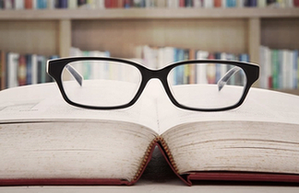
In a world driven by screens and digital devices, our eyes bear the brunt of constant strain and stress. As we age, many of us find ourselves grappling with the need for reading glasses to make sense of fine print, books, and documents. Reading glasses are not just a functional accessory; they are a window to a clearer, more focused world. In this comprehensive guide, we will delve into the world of reading glasses, exploring their history, types, benefits, and how to choose the perfect pair.
A Glimpse into History Eyes
The concept of reading glasses dates back to the 13th century, with the earliest documented use in Italy. It wasn’t until the 18th century that Benjamin Franklin introduced bifocals, a revolutionary advancement that combined distance and reading prescriptions in a single lens. Since then, reading glasses have evolved significantly, becoming a ubiquitous tool for millions around the globe.
The lenses in reading glasses are typically prescribed to provide clear vision for close-up activities. They are available in various magnification strengths, often referred to as “diopters,” such as +1.00, +1.50, +2.00, and so on. Higher diopter values indicate stronger magnification.
Reading glasses are typically worn when performing tasks such as reading books, newspapers, or using a computer or smartphone. They are meant to be worn temporarily, as needed, and are not suitable for correcting distance vision or astigmatism.
Types of Reading Glasses
Reading glasses come in various forms to cater to diverse needs. Here are some common types:
- Single Vision Readers: These are the most basic reading glasses, designed for people with a single vision prescription for reading or close-up tasks.
- Bifocal Readers: Bifocals have two distinct optical powers in a single lens. The upper part is for distance vision, and the lower portion is for reading.
- Progressive Readers: Progressives, also known as no-line bifocals, offer a gradual transition from distance vision to close-up vision. They eliminate the visible line found in traditional bifocals.
- Computer Glasses: Specifically designed for digital device use, computer glasses reduce the strain on your eyes caused by staring at screens for extended periods.
- Reading Sunglasses: These are perfect for outdoor enthusiasts who want to enjoy a good book or magazine in the sun without compromising on eye protection.
The Benefits of Reading Glasses
Reading glasses offer a plethora of benefits that extend beyond just improved vision:
- Enhanced Clarity: The most obvious advantage is improved clarity when reading or performing close-up tasks, reducing eye strain and fatigue.
- Convenience: Reading glasses are compact and easy to carry, making them a convenient solution for those who require occasional or constant assistance with close-up work.
- Cost-Effective: Compared to multifocal or prescription glasses, reading glasses are often more budget-friendly.
- Versatility: They are available in various styles and strengths, allowing wearers to choose the perfect pair to match their fashion sense and visual needs.
- Eye Health: By reducing eye strain, reading glasses can contribute to better eye health and potentially prevent more severe vision problems.
Choosing the Right Pair
Selecting the perfect pair of reading glasses involves a few essential considerations:
- Prescription Strength: It’s crucial to know your prescription strength. You can get a simple eye examination from an optometrist to determine the right power for your reading glasses.
- Frame Style: Frames come in a wide range of designs and materials, from classic to modern. Choose a style that complements your face shape and personal taste.
- Lens Material: Reading glasses are typically made from plastic or glass. Plastic lenses are lighter, while glass lenses are more scratch-resistant. Pick the material that suits your lifestyle.
- Lens Coatings: Anti-reflective coatings can reduce glare, while anti-scratch coatings enhance durability. Consider these options for added comfort and longevity.
- Fit: Ensure that the frames fit comfortably on your face without sliding down or pinching your nose.
- UV Protection: If you plan to use your reading glasses outdoors, consider lenses with built-in UV protection to shield your eyes from harmful sun rays.
- Budget: Set a budget that aligns with your preferences and needs. Remember that reading glasses come in a wide price range, so there’s something for everyone.
Caring for Your Reading Glasses
To make the most of your reading glasses, proper care is essential:
- Clean Regularly: Use a microfiber cloth to clean your lenses and avoid scratching. Avoid using harsh chemicals or paper towels.
- Store Safely: Keep your reading glasses in a protective case when not in use to prevent damage.
- Avoid Extreme Temperatures: Avoid leaving your glasses in places with extreme heat or cold, as this can damage the frames and lenses.
- Regular Check-Ups: As your eyes can change over time, it’s essential to have regular eye exams to ensure your prescription is up to date.
Conclusion
Reading glasses are a simple yet transformative tool that can significantly enhance your quality of life. Whether you’re a bookworm, a computer whiz, or just someone who enjoys the finer details of life, the right pair of reading glasses can make a world of difference. By understanding the types, benefits, and how to choose the perfect pair, you can unlock the clarity you deserve and embark on a journey of visual comfort and ease.